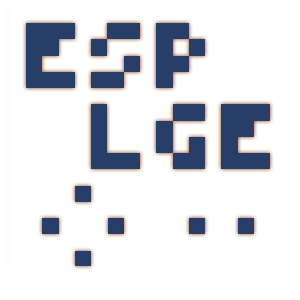This is likely not to come as much of a shock to you, but the ESP8266 is pretty popular. At this point, we’re more surprised when a project that hits the tip line doesn’t utilize this incredibly cheap WiFi-enabled microcontroller. If you’re making a gadget that needs to connect to the Internet, there’s a good chance some member of the ESP family is going to be a good choice. But is it a one-trick MCU?

Well, judging by software frameworks like the “Little Game Engine” created by [Igor], it looks like the ESP is expanding its reach into offline projects as well. While it might not turn the ESP8266 into a next-gen gaming powerhouse, we’ve got to admit that the demos shown off so far are pretty impressive. When paired with a couple of buttons and a TFT display such as the ILI9341, the ESP could make for a particularly pocket-friendly game system.
The game engine that [Igor] has developed provides the programmer with a virtual screen resolution of 128×128, a background layer, and 32 sprites which offer built-in tricks like collision detection and rotation. All while running at a respectable 20 frames per second. This environment is ideal for the sort of 2D scrolling games that dominated the 8 and 16-bit era of gaming, and as seen in the video after the break, it can even pull off a fairly decent clone of “Flappy Bird”.
In addition, [Igor] created an online emulator and compiler which allows you to develop games using his engine right in your web browser. You can load up a selection of example programs and execute them to see what the engine is capable of, then try your hand at developing your own game before ever having to put the hardware together. Incidentally, the performance of this online development environment is fantastic; with even the fairly complex “Flappy Bird” example code compiling and starting in the emulator nearly instantaneously.
This isn’t the first handheld game we’ve seen powered by the ESP8266, but it would be fair to say this one is a generational leap over its predecessors. Of course, if you really want to start throwing around some pixels, you might want to make the leap to the ESP32; which is the heart of the incredibly awesome (and tiny) PocketSprite.
















WOW!
This is one heck of a cool project! The IDE including it’s examples, really invites to try it out. I am amazed how fluently this works.
“This environment is ideal for the sort of 2D scrolling games that dominated the 8 and 16-bit era of gaming”
Way to hit home how 99% of the ESP8266’s out in the wild are merely idling.
This is an astonishing project.
I have 8266 and 32 just gathering dust…too powerfull to put into something.Now I can make a gaming console!
Impressive! I’ll give it a try next weekend.
Amazing!!!
I got an ODROD-GO about 6 months ago and I’m about half way through Link’s Awakening on it. It’s an ESP32 based handheld similar in size and function to a Game Boy Pocket. You can install your own software on it, and wiggle the I/O ports as if it were an Arduino, or run one of the pre-packaged emulators. Is it the best gameboy color emulator? No way. But it does so much more as a device and the price was in my budget.
typo, should be: ODROID-GO
Don’t forget the greatest test of all: “But can it run Doom?”
I have been playing with the esp family of chips from the esp01 with 512k. Now playing with m5stack and espcam with face recognition logging, anyway hardkernal has a nice esp32 with psram and its 10th anniversary odroid go plays games pretty good
This is the hack we like
I have everything hooked up but can not figure out how to get the .bin files into the ESP8266! Can any one point me in the right direction? Thanks
I followed this guide , it took me a while to find out the file system was called SPIFFs and how to use it too.
https://www.youtube.com/watch?v=25eLIdLKgHs